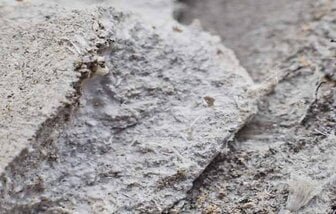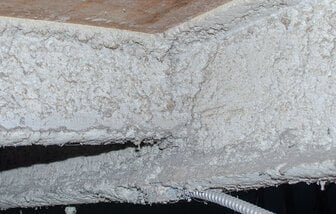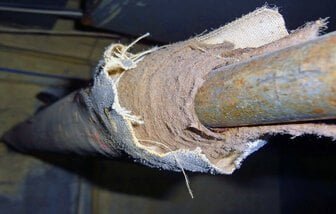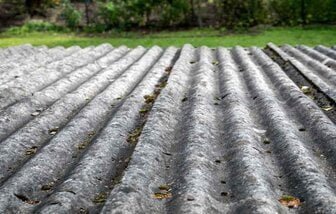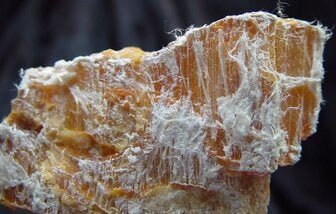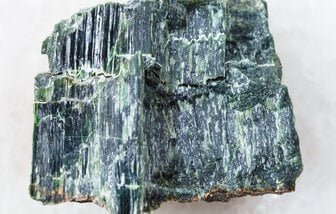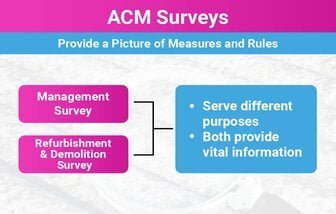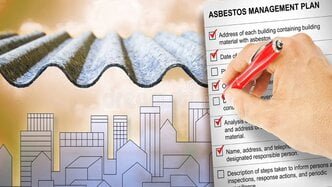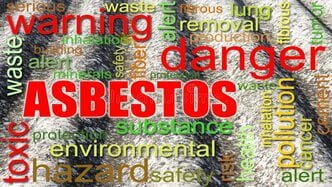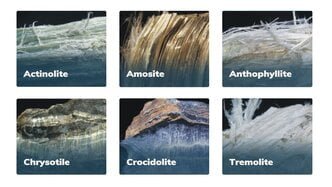Asbestos floor tiles
Identifying asbestos floor tiles is crucial for safety, especially in older buildings where asbestos was commonly used. Learn the characteristics of asbestos tiles and the importance of professional testing. Understand the health risks of asbestos exposure and the necessary steps for managing and safely removing asbestos-containing materials. Stay informed about UK regulations and ensure the safety of building occupants with proper asbestos management.
Identifying and Managing Asbestos Floor Tiles: Ensuring a Safe Environment
Managing asbestos floor tiles requires a comprehensive approach to ensure the safety of all occupants. If asbestos is suspected in flooring, it is crucial to seek professional advice immediately. Licensed asbestos surveyors can conduct thorough risk assessments to determine the presence and condition of asbestos-containing materials (ACMs). This step is essential to formulating an effective management plan.
Once the presence of asbestos is confirmed, property owners should adhere to strict safety guidelines. This includes avoiding any disturbance of the asbestos tiles, which can release harmful fibers into the air. It is recommended to encapsulate or seal the asbestos tiles if they are in good condition and not likely to be disturbed. However, if the tiles are damaged or deteriorating, removal by licensed professionals is necessary.
In the UK, the regulatory framework governing asbestos management is robust. The use of asbestos has been banned since 1999, but many older buildings still contain ACMs. The Control of Asbestos Regulations 2012 mandates property owners to identify and manage asbestos risks, ensuring that anyone who may come into contact with asbestos is adequately informed and protected. Failure to comply with these regulations can lead to significant legal and financial consequences.
Engaging licensed asbestos removal professionals is paramount when dealing with asbestos floor tiles. These experts are trained in safe removal techniques and equipped with the necessary protective gear. They also ensure that asbestos waste is disposed of in accordance with environmental regulations, preventing any risk of contamination.
Maintaining a safe environment involves regular inspections of areas containing asbestos to monitor their condition. Property owners should avoid any DIY removal or repair of asbestos tiles, as improper handling can pose severe health risks. Additionally, maintaining clear communication with occupants about the presence of asbestos and the measures taken to manage it can help alleviate concerns and ensure compliance with safety protocols.
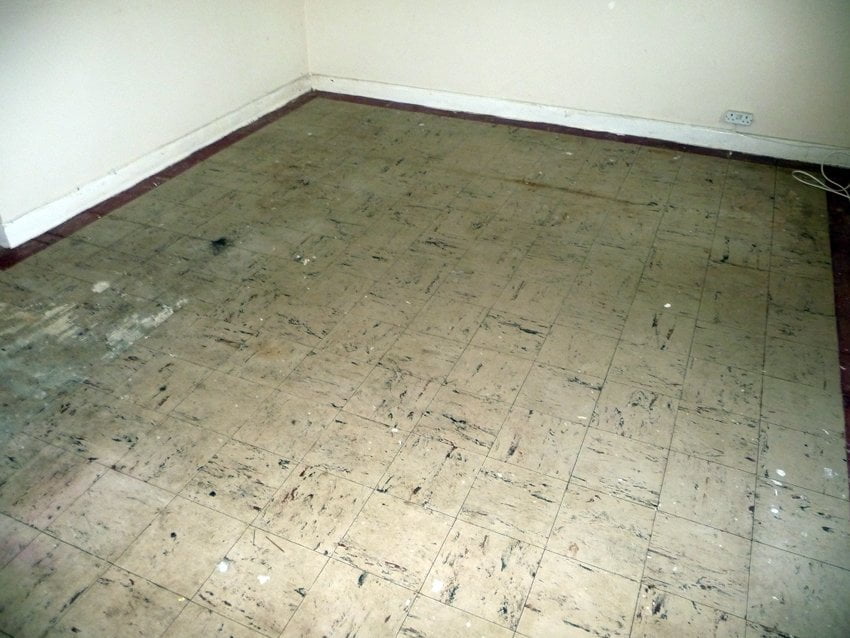
Asbestos, a naturally occurring mineral, was commonly used in the construction industry for its fire-resistant and insulating properties. However, it was later discovered that asbestos exposure poses serious health risks, including lung diseases and cancer. As a result, the use of asbestos in construction materials, including floor tiles, was banned in the UK in 1999. Despite the ban, many buildings still contain asbestos-containing materials, including floor tiles. In this article, we will discuss how to identify asbestos floor tiles in the UK.
Visual Inspection
One of the most common methods to identify asbestos floor tiles is through visual inspection. However, it is important to note that visual inspection alone cannot confirm the presence of asbestos, as it requires laboratory testing for definitive results. Nevertheless, there are certain visual characteristics that can indicate the presence of asbestos:
- Age: Asbestos floor tiles were commonly used in the UK until the 1980s. If your building was constructed before this period, there is a higher likelihood of asbestos-containing materials.
- Size and Shape: Asbestos floor tiles are typically 9 inches by 9 inches in size and may have rounded or straight edges.
- Color: Asbestos tiles often have a distinctive color palette, including shades of gray, white, brown, or off-white.
- Pattern: Some asbestos tiles may have patterns, such as flecks or marbling, which can help identify them.
Professional Testing
If you suspect that your floor tiles may contain asbestos, it is crucial to seek professional assistance. Certified asbestos professionals can collect samples of the material for laboratory analysis. They follow strict protocols to ensure the safe collection and handling of samples, minimizing the risk of asbestos exposure. Laboratory testing can provide accurate results regarding the presence of asbestos in your floor tiles.
Do’s and Don’ts
When dealing with potential asbestos-containing floor tiles, it is important to follow certain precautions:
- Do:
- Leave the tiles undisturbed if they are in good condition and not damaged.
- Seek professional advice and assistance for testing and removal.
- Ensure that any work involving asbestos-containing materials is carried out by licensed professionals.
- Keep the area well-ventilated to minimize the risk of asbestos fibers becoming airborne.
- Regularly monitor the condition of the tiles for any signs of damage or deterioration.
- Don’t:
- Attempt to remove or disturb the tiles yourself, as this can release asbestos fibers into the air.
- Sand, drill, or scrape the tiles, as these actions can create dust and increase the risk of asbestos exposure.
- Use abrasive cleaning methods on the tiles, as this can damage the surface and release asbestos fibers.
- Dispose of asbestos-containing materials in regular household waste. Follow proper disposal procedures.
Conclusion
Identifying asbestos floor tiles in the UK is a crucial step in ensuring the safety of your building and its occupants. Visual inspection can provide initial indications, but professional testing is necessary for accurate results. It is essential to follow proper precautions and seek professional advice when dealing with potential asbestos-containing materials. By taking the necessary steps, you can effectively manage the risks associated with asbestos and safeguard the health of those within your building.
The Dangers of Asbestos
Asbestos is dangerous when its fibers are released into the air and inhaled. When asbestos-containing materials are damaged or disturbed, such as during renovation or demolition work, the fibers can become airborne and pose a significant risk to anyone in the vicinity.
Legal Requirements
In the United Kingdom, the Health and Safety Executive (HSE) has strict regulations in place regarding the removal and handling of asbestos. According to HSE guidelines, if you are a non-licensed individual, you can only remove asbestos-containing materials if:
- The total area of asbestos-containing material does not exceed 10 square meters.
- The work is of short duration (less than one hour).
- You have received appropriate training and have the necessary equipment to safely remove the asbestos.
Should You Remove Asbestos Floor Tiles Yourself?
While it is legally possible for non-licensed individuals to remove small amounts of asbestos-containing materials, including floor tiles, it is strongly recommended that you hire a licensed asbestos removal professional to ensure the safety of yourself and others. Removing asbestos requires specialized knowledge, equipment, and protective clothing to minimize the risk of exposure.
Professional asbestos removal companies have the necessary training and experience to safely handle and dispose of asbestos materials. They follow strict procedures to contain the asbestos fibers and prevent them from becoming airborne. They also have access to specialized tools and equipment that can minimize the risk of releasing asbestos fibers during the removal process.
The Risks of DIY Asbestos Removal
Attempting to remove asbestos floor tiles yourself can be extremely dangerous. Without proper training and equipment, you may unknowingly release asbestos fibers into the air, putting yourself and others at risk of exposure. These fibers can remain in the air for a long time and can be easily inhaled.
Even if you manage to remove the floor tiles without damaging them, the adhesive used to secure the tiles may still contain asbestos. Disturbing the adhesive or sanding the floor can release asbestos fibers, creating a hazardous environment.
Safe Asbestos Removal Process
When hiring a professional asbestos removal company, they will follow a strict process to ensure the safe removal of asbestos-containing materials:
- Assessment: The company will assess the area and determine the extent of asbestos contamination.
- Containment: They will establish containment measures to prevent the spread of asbestos fibers.
- Removal: Trained technicians will safely remove the asbestos materials using appropriate tools and techniques.
- Disposal: The asbestos materials will be carefully sealed and disposed of at a licensed facility.
- Cleanup: The area will be thoroughly cleaned and decontaminated to ensure no asbestos fibers remain.
Conclusion
Removing asbestos floor tiles yourself is not recommended due to the potential health risks involved. It is best to hire a licensed asbestos removal professional who has the necessary expertise and equipment to safely handle and dispose of asbestos-containing materials. By doing so, you can protect yourself and others from the dangers of asbestos exposure and ensure compliance with HSE regulations.
1. Identify and Confirm the Presence of Asbestos Tiles
Before starting any removal or disposal process, it is important to confirm whether the tiles contain asbestos. Asbestos can be present in various forms, including vinyl, linoleum, or asphalt tiles. It is recommended to hire a certified asbestos inspector or a qualified professional to conduct a thorough inspection and testing to identify the presence of asbestos. They will take samples and send them to a laboratory for analysis.
2. Hire a Licensed Asbestos Abatement Contractor
If the test results confirm the presence of asbestos in your tiles, it is highly recommended to hire a licensed asbestos abatement contractor. These professionals have the necessary training and equipment to safely remove and dispose of asbestos-containing materials. Attempting to remove asbestos tiles on your own can release harmful fibers into the air, putting you and others at risk.
3. Obtain the Required Permits
Before starting the removal process, check with your local authorities to determine if any permits are required for asbestos tile removal. Asbestos is considered hazardous waste, and proper disposal regulations must be followed. Obtaining the necessary permits ensures that you are in compliance with local regulations and helps protect the environment.
4. Proper Removal and Handling
During the removal process, it is essential to follow strict safety guidelines to minimize the release of asbestos fibers. The contractor will use specialized tools and techniques to carefully remove the tiles without causing any damage or disturbance. They will also take precautions to prevent the spread of asbestos fibers, such as sealing off the work area and using protective clothing and respiratory equipment.
5. Secure Packaging and Transportation
Once the tiles have been safely removed, they need to be properly packaged and labeled for transportation to an approved disposal facility. The contractor will seal the asbestos-containing materials in leak-tight containers, ensuring that no fibers are released during transportation. It is important to handle the packaged materials with care to prevent any breakage or damage.
6. Disposal at an Approved Facility
Asbestos tiles cannot be disposed of in regular household waste or recycling bins. They must be taken to an approved asbestos disposal facility. Contact your local waste management authority or environmental agency to find a licensed facility in your area. These facilities are equipped to handle and dispose of asbestos safely, preventing any potential harm to human health and the environment.
Asbestos Millboard
Millboards manufactured between 1896 and 1965 can contain chrysotile asbestos (up to 97%). Often found in: Pipe runs, electrical gear, vaults, storage. Often used for: Fire protection on structural
Asbestos Cement
Generally containing 10-15% asbestos fibres which are bound in Portland cement or calcium silicate. Uncoated sheets, widely used in the past as a building material can be identified as light grey in
Asbestos Sprayed Coatings
Asbestos sprayed coatings have been widely used in the construction industry in the past, particularly in the United Kingdom
Asbestos Tiles
Learn about asbestos floor tiles in the UK, including their identification, dangers, and management. Find out how to identify asbestos floor tiles
Asbestos Lagging, Ropes & Yarns
Asbestos lagging and ropes were once widely used for their insulation properties. However, due to the health risks associated with asbestos exposure, their use has been banned in many countries.
Asbestos Textured Coatings
Asbestos textured coatings, also known as Artex or similar products, were widely used in the construction industry in the UK from the 1960s to the 1990s. These coatings were applied to ceilings
Corrugated Asbestos Panels
When it comes to garage roofing in the UK, one type of material that was widely used in the past is corrugated asbestos panels. However ue to health and safety concerns, the use of asbestos has been banned
Crocidolite Asbestos
Learn about crocidolite asbestos, a highly hazardous form of asbestos that was widely used in various industries. Discover its properties, health risks, and the importance of professional testing and removal.
Amosite Asbestos
Amosite asbestos, also known as brown asbestos, is a type of asbestos mineral that was widely used in various industries for its heat resistance and insulating properties.
Chrysotile Asbestos
Learn about chrysotile asbestos, its applications, and the potential health risks associated with exposure. Understand the importance of safety measures and regulations to prevent asbestos
Asbestos Surveys
We are able to provide any level of survey required, up to the Demolition and Refurbishment survey now required prior to the demolition of any building or structure.
What is Asbestos?
Asbestos was commonly used as a construction material in the UK between the 1950s and 1980s in particular. If your home was built between these years, chances are that you are living with Asbestos
Asbestos Management Plan
An asbestos management plan is essential for managing asbestos-containing materials (ACMs) in buildings. It aims to protect occupants and workers from asbestos exposure through identification, assessment, and control of ACMs.
Asbestos Dangers
Learn about the dangers of asbestos, its health risks including mesothelioma and lung cancer, and how to protect yourself from exposure. Understand the regulations and laws regarding asbestos, and find resources and support for asbestos-related issues.
Types Of Asbestos
Learn about the different types of asbestos, including chrysotile asbestos, amphibole asbestos, tremolite asbestos, and anthophyllite asbestos. Understand the characteristics and health risks associated with each type of asbestos.
How To Manage Asbestos
Dealing with asbestos requires caution and adherence to proper safety procedures. Identifying asbestos and taking appropriate action is crucial to protect the health and well-being of individuals. If you suspect the presence of asbestos.
Ready to start your project?
Committed to Excellence on all levels
Let's Work Together
Please complete the form below and someone from the Total team will be in touch to discuss your asbestos requirements For urgent needs, our customer support team is available through various channels. You can reach us via phone during business hours, or through our dedicated email support. We are committed to providing timely assistance and ensuring your asbestos concerns are addressed promptly and professionally.


